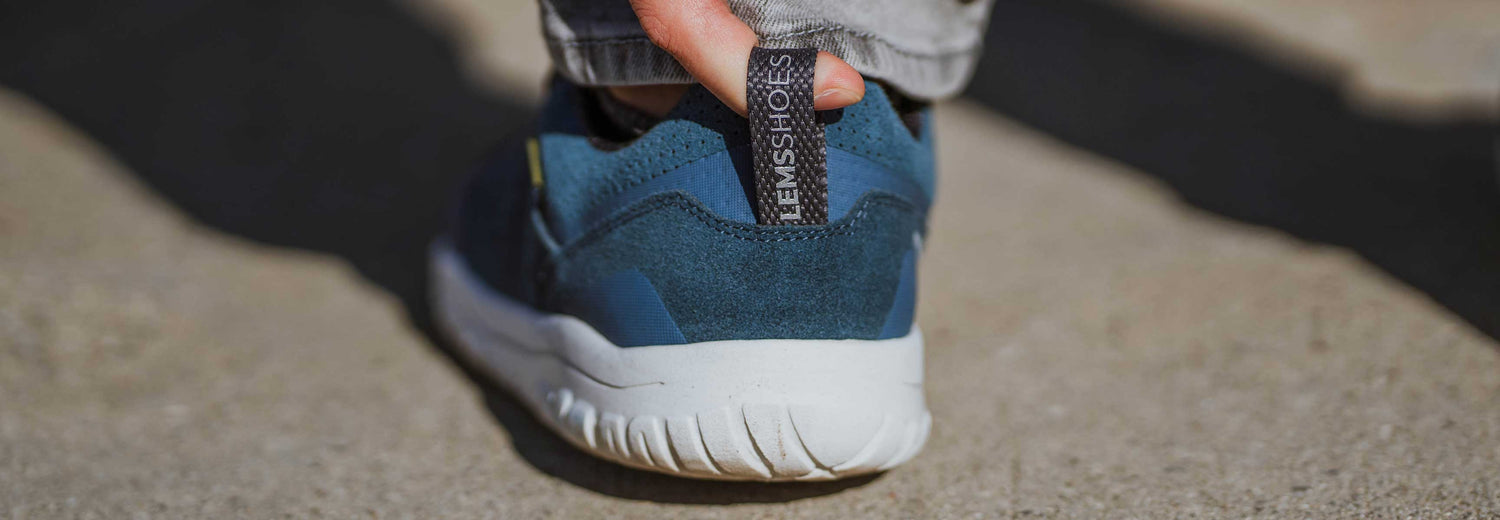Foot pain is a prevalent complaint that affects millions of people worldwide, often causing discomfort and hindering daily activities. Whether it's a dull ache in the heel, stabbing pain in the arch, or throbbing sensations in the toes, foot pain can significantly impact one's quality of life. In our fast-paced world, where we're constantly on the move, it's essential not to overlook the health of our feet.
In this blog article we'll delve into the common causes of foot pain, explore effective pain management techniques, and discuss preventative measures to keep your feet healthy and pain-free. We aim to provide you with valuable insights and resources to safeguard your foot health. Let's prioritize foot health and make sure we never forget about our feet again.
Part 1: Understanding Foot Pain
Foot pain can manifest in various forms, from sharp, stabbing sensations to dull, persistent aches. Understanding the different types of foot pain and their underlying causes is essential for effective management and prevention. Let's explore some common types of foot pain:
-
Plantar Fasciitis: This condition involves inflammation of the plantar fascia, the thick band of tissue that runs along the bottom of the foot. It often causes sharp pain in the heel, especially with the first steps in the morning or after prolonged periods of rest.
-
Heel Spurs: Heel spurs are bony protrusions that develop on the underside of the heel bone. They can cause intense pain and tenderness, particularly when standing or walking.
-
Bunions: Bunions are bony bumps that form at the base of the big toe joint, causing the big toe to deviate towards the other toes. They can lead to pain, swelling, and difficulty wearing shoes.
-
Metatarsalgia: This condition involves inflammation and pain in the ball of the foot, often caused by excessive pressure or overuse. It may feel like a burning or stabbing sensation.
-
Morton's Neuroma: Morton's neuroma is a thickening of the tissue around one of the nerves leading to the toes, typically between the third and fourth toes. It can cause sharp, shooting pain and numbness in the toes.
Understanding the specific type of foot pain you're experiencing can help determine the most appropriate treatment and management strategies.
Part 2: Pain Management Articles
In the vast landscape of foot pain management, numerous articles from reputable sources offer valuable insights and guidance. Here, we'll cite a selection of articles that delve into various aspects of foot pain management, providing readers with a comprehensive understanding of effective strategies and techniques:
Managing Plantar Fasciitis Pain: A Comprehensive Guide
- This article from the American Podiatric Medical Association (APMA) offers a thorough overview of plantar fasciitis, including its causes, symptoms, and treatment options. It discusses conservative treatments such as stretching exercises, orthotic inserts, and physical therapy, as well as more invasive interventions like corticosteroid injections and surgery.
- Published in the Journal of the American Academy of Orthopaedic Surgeons (JAAOS), this article provides evidence-based recommendations for diagnosing and managing heel pain, including conditions such as plantar fasciitis and heel spurs. It discusses conservative treatments, such as icing, stretching, and wearing supportive shoes, as well as surgical options for refractory cases.
- From the Mayo Clinic, this article offers a comprehensive overview of bunions, including their symptoms, causes, and non-surgical and surgical treatment options. It emphasizes the importance of wearing properly fitting shoes, using orthotic inserts, and considering surgical intervention only when conservative measures fail to provide relief.
- This article, published by the Mayo Clinic, explores the diagnosis and management of metatarsalgia, a common cause of ball of foot pain. It discusses conservative treatments, such as rest, ice, and over-the-counter pain relievers, as well as more advanced interventions like corticosteroid injections and orthotic devices.
- Written by experts from the Cleveland Clinic, this article provides an in-depth look at Morton's neuroma, including its pathophysiology, clinical presentation, and treatment options. It outlines conservative measures such as padding, orthotic devices, and footwear modifications, as well as surgical options for severe cases.
By consulting these authoritative articles and resources, individuals can gain valuable insights into foot pain management and make informed decisions about their care. In the following sections, we'll explore practical pain management techniques and preventative measures to help alleviate foot discomfort and promote overall foot health.
Part 3: Foot Pain Management Practices
Effective management of foot pain often involves a multifaceted approach that combines lifestyle modifications, therapeutic interventions, and supportive footwear. Here are some practical foot pain management practices to consider:
Stretching and Strengthening Exercises:- Incorporate gentle stretching exercises into your daily routine to improve flexibility and reduce tension in the muscles and ligaments of the feet. Focus on stretching the calf muscles, Achilles tendon, and plantar fascia to alleviate heel pain and improve mobility.
- Additionally, perform strengthening exercises to target the muscles of the feet and lower legs, such as toe curls, calf raises, and towel scrunches. Building strength in these muscles can help support the arches of the feet and reduce strain on the plantar fascia.
- Consider using orthotic inserts or arch supports to provide additional cushioning and support to your feet. These devices can help redistribute pressure away from painful areas, alleviate discomfort, and promote proper alignment of the foot and ankle.
- Custom orthotics, prescribed by a podiatrist or orthopedic specialist, are tailored to your specific foot anatomy and biomechanics, providing optimal support and stability.
- Select footwear that is well-cushioned, supportive, and appropriately sized to accommodate your feet comfortably. Look for shoes with ample arch support, cushioned midsoles, and roomy toe boxes to prevent cramping and irritation.
- Avoid wearing high heels, narrow-toed shoes, or shoes with inadequate support, as these can exacerbate foot pain and contribute to the development of conditions like bunions, hammertoes, and neuromas.
- Consider seeking the guidance of a physical therapist who specializes in treating foot and ankle conditions. Physical therapy can help improve range of motion, strength, and proprioception in the feet, addressing underlying biomechanical issues and reducing pain.
- Your physical therapist may prescribe targeted exercises, manual therapy techniques, and modalities such as ultrasound or electrical stimulation to promote healing and improve function.
- Explore various pain relief modalities, such as ice therapy, heat therapy, and over-the-counter pain medications, to alleviate acute discomfort and inflammation. Ice packs can help reduce swelling and numb pain, while heat therapy can improve circulation and relax tense muscles.
- Additionally, consider using topical analgesic creams or gels containing ingredients like menthol or capsaicin to provide temporary relief from foot pain and discomfort.
By incorporating these foot pain management practices into your daily routine, you can effectively alleviate discomfort, improve mobility, and promote overall foot health. In the following section, we'll explore preventative measures to help protect your feet from pain and injury in the long term.
Part 4: Preventative Measures
Prevention is key when it comes to foot health, as taking proactive steps to protect your feet can help avoid pain and injury in the future. Here are some preventative measures to keep your feet healthy and pain-free:
Proper Footwear Selection:- Invest in shoes that provide adequate support, cushioning, and stability for your feet. Look for footwear with arch support, shock-absorbing midsoles, and ample room in the toe box to accommodate natural foot movement.
- Choose shoes appropriate for the activity you'll be engaging in, whether it's running, hiking, or everyday wear. Lems Shoes offers a variety of minimalist footwear options designed to promote natural foot movement and alignment while providing the support and protection you need. Examples include the Lems Primal 2 and the Lems Trailhead, both of which feature wide toe boxes and flexible soles for optimal comfort and performance.
- Establish a regular foot care routine to keep your feet clean, moisturized, and free from issues such as dry skin, calluses, and ingrown toenails. Trim your toenails straight across and avoid cutting them too short to prevent ingrown toenails.
- Inspect your feet regularly for signs of irritation, blisters, or changes in skin color or texture. Address any abnormalities promptly and seek medical attention if you notice persistent pain, swelling, or other concerning symptoms.
- Maintaining a healthy weight can reduce the strain on your feet and lower extremities, decreasing the risk of conditions such as plantar fasciitis, heel spurs, and osteoarthritis. Aim for a balanced diet rich in fruits, vegetables, lean proteins, and whole grains to support overall health and weight management.
- Engage in regular physical activity to promote cardiovascular health, improve circulation, and strengthen the muscles and ligaments of the feet and ankles.
- Avoid overuse injuries by gradually increasing the intensity and duration of your physical activities, whether it's running, walking, or participating in sports. Listen to your body and allow for adequate rest and recovery between workouts to prevent overtraining.
- Incorporate cross-training and variety into your exercise routine to reduce repetitive stress on specific muscles and joints. Mix up your activities with low-impact exercises like swimming, cycling, or yoga to give your feet a break from high-impact activities.
By incorporating these preventative measures into your daily routine and selecting the right footwear, you can help protect your feet from pain and injury, allowing you to maintain an active and healthy lifestyle for years to come. In the next section, we'll wrap up our discussion and offer some final thoughts on foot health and wellness.
Conclusion
In conclusion, prioritizing foot health is essential for maintaining overall well-being and quality of life. Foot pain and discomfort can significantly impact daily activities and hinder one's ability to stay active and engaged. However, by taking proactive steps to protect and care for your feet, you can mitigate the risk of pain and injury and enjoy life to the fullest.
At Lems Shoes, we understand the importance of holistic foot health and wellness. Our minimalist footwear options are designed to promote natural foot movement and alignment, allowing you to move freely and comfortably in any environment. Whether you're exploring the great outdoors, hitting the gym, or simply going about your daily routine, Lems Shoes has you covered.
By selecting the right footwear, practicing good foot care habits, and incorporating preventative measures into your lifestyle, you can safeguard your feet and prevent common issues such as plantar fasciitis, bunions, and heel pain. Remember to listen to your body, prioritize rest and recovery, and seek professional guidance if you experience persistent foot problems.
With a proactive approach to foot health and the support of Lems Shoes, you can keep your feet happy, healthy, and pain-free for years to come. Take the first step towards better foot health today and experience the difference it can make in your overall well-being. Thank you for joining us on this journey towards healthy feet and a happier life.

